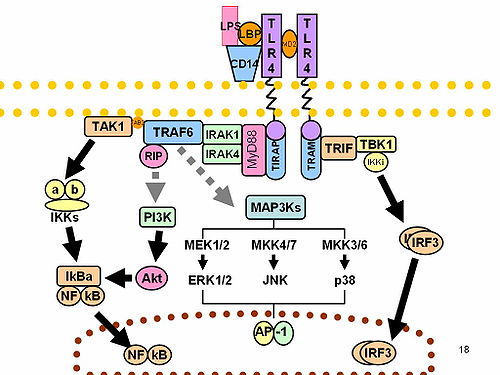| Developed under the direction and sponsorship of Novartis Pharmaceuticals Corporation.
|
 |
 |
 |
 |
3 years of adjuvant therapy with GLEEVEC reduced the risk of recurrence by 54% vs 1 year of therapy in KIT+ GIST patients
(median follow-up of 42 months)1 |
 |
 |
|
 |
|
 |
 |
| Orchestrate continued success by extending adjuvant treatment in KIT+ GIST1 |
 |
View Indication and Important Safety Information
The results from the Scandinavian Sarcoma Group (SSG) XVIII/AIO Phase 3
trial showed a significant improvement in recurrence-free survival (RFS)
when adjuvant treatment with GLEEVEC® (imatinib
mesylate) was extended to 3 years vs 1 year of therapy (median
follow-up of 42 months). In addition to improving RFS, trial results
demonstrated an overall survival (OS) benefit, with mortality reduced by
half in the 3-year arm vs the 1-year arm (12 vs 25 deaths,
respectively; median follow-up of 48 months). These findings have
prompted updates to the FDA-approved
Prescribing Information for GLEEVEC and the NCCN guidelines supporting 3 years of adjuvant treatment for appropriate resected patients with KIT+ GIST.1,2 Please consider this information when making clinical decisions and recommendations for your KIT+ GIST patients.
| Important Safety Information |
Serious adverse reactions may occur, including edema, cytopenias, severe
congestive heart failure, left ventricular dysfunction, hepatotoxicity,
hemorrhage, GI disorders, hypereosinophilic toxicity, dermatologic
toxicities, hypothyroidism, toxicities from long-term use, fetal harm,
and tumor lysis syndrome. Caution should be recommended when driving a
car or operating machinery.1
| In
the SSG trial, risk of tumor recurrence was reduced by half with 3
years vs 1 year of adjuvant GLEEVEC therapy (median 42-month follow-up)1 |
Recurrence events were 68% higher in the 1-year arm vs the 3-year arm (84 vs 50 events)
aSSG XVIII/AIO study was a
multicenter, open-label, Phase 3 trial conducted to determine the
clinical benefits of 3 years (n=198) vs 1 year (n=199) of adjuvant
therapy with GLEEVEC 400 mg/day. Inclusion criteria were tumor diameter
>5 cm and mitotic count >5/50 high-power fields (HPFs), or tumor
diameter >10 cm and any mitotic count, or tumor of any size with
mitotic count >10/50 HPFs, or tumor rupture. The primary end point
was RFS defined as the time from date of randomization to the date of
recurrence or death from any cause. OS was a secondary end point. Median
time of follow-up was 42 and 48 months, respectively.1
GIST=gastrointestinal stromal tumor; NCCN=National Comprehensive Cancer
Network; RFS=recurrence-free survival; OS=overall survival. |
| In the SSG trial, no new adverse reactions were reported with longer duration of therapy (3-year arm vs 1-year arm)1 |
 |
| • |
As
in previous trials, the most frequently reported adverse reactions in
this clinical trial were diarrhea, fatigue, nausea, edema, decreased
hemoglobin, rash, vomiting, and abdominal pain |
| — |
14% of patients in the 3-year arm vs 8% of patients in the 1-year arm discontinued treatment due to adverse events (AEs) |
| — |
The incidence of serious AEs (Grade ≥3) was 33% in the 3-year arm vs 20% in the 1-year arm |
| Indications and Important Safety Information |
GLEEVEC® (imatinib mesylate) tablets are indicated for:
| • |
Patients with KIT (CD117)-positive unresectable and/or metastatic malignant gastrointestinal stromal tumors (GIST) |
| • |
Adjuvant treatment of adult patients following complete gross resection of KIT (CD117)-positive GIST |
| Important Safety Information |
| • |
GLEEVEC is often associated with edema and,
occasionally, serious fluid retention. Severe fluid retention was
reported in 9% to 13.1% of patients taking GLEEVEC for GIST. Patients
should be weighed and monitored regularly for signs and symptoms of
fluid retention, which can be serious or life threatening, and be
advised to report any rapid, unexpected weight gain. The probability of
edema tended to be increased among older patients (>65 years) or
those taking higher doses of GLEEVEC. Severe edema was observed in 182
patients (11.1%). If severe fluid retention occurs, manage with diuretic
therapy and withhold GLEEVEC until the event has resolved, and then
resume, depending on the initial severity of the event |
| • |
Cytopenias
have been reported. Complete blood counts should be performed weekly
for the first month, biweekly for the second month, and periodically
thereafter as clinically indicated (eg, every 2 to 3 months). Dose
reduction, treatment interruption, or in rare cases discontinuation of
treatment may be required for severe neutropenia or thrombocytopenia
(see full Prescribing Information for dose adjustment recommendations) |
| • |
Severe
congestive heart failure and left ventricular dysfunction have been
reported. Most of the patients with reported cardiac events have had
other comorbidities and risk factors, including advanced age and
previous medical history of cardiac disease. Patients with cardiac
disease or risk factors for cardiac disease or history of renal failure
should be monitored carefully, and any patient with signs or symptoms
consistent with cardiac or renal failure should be evaluated and treated |
| • |
Hepatotoxicity,
occasionally severe, may occur. Cases of fatal liver failure and severe
liver injury requiring liver transplants have been reported with both
short-term and long-term use of GLEEVEC. Assess liver function before
initiation of treatment and monthly thereafter, or as clinically
indicated. A 25% decrease in the recommended dose should be used for
patients with severe hepatic impairment. If severe hepatotoxicity
occurs, GLEEVEC should be withheld until the event has resolved and then
resumed, depending on the initial severity of the event |
| • |
When
GLEEVEC is combined with chemotherapy, liver toxicity in the form of
transaminase elevation and hyperbilirubinemia has been observed.
Additionally, there have been reports of acute liver failure. Monitoring
of hepatic function is recommended |
| • |
In
the Phase 3 unresectable or metastatic GIST studies, 13% of patients
reported hemorrhage (NCI Grades 3/4) at any site. In the Phase 2
unresectable or metastatic GIST study, 5% of patients were reported to
have severe gastrointestinal (GI) bleeds and/or intratumoral bleeds. GI
tumor sites may have been the source of GI bleeds; therefore, GI
symptoms should be monitored at the start of therapy |
| • |
In
patients with hypereosinophilic syndrome with occult infiltration of
HES cells within the myocardium, cardiogenic shock and left ventricular
dysfunction have been associated with HES cell degranulation upon
initiation of GLEEVEC. The condition was reported to be reversible with
the administration of systemic steroids, circulatory support measures,
and temporarily withholding GLEEVEC |
| • |
Bullous
dermatologic reactions (eg, erythema multiforme and Stevens-Johnson
syndrome) have also been reported. In some cases, the reaction recurred
upon rechallenge. Several postmarketing reports describe patients able
to tolerate the reintroduction of GLEEVEC at a lower dose, with or
without concomitant corticosteroids or antihistamines following
resolution or improvement of the bullous reaction |
| • |
Clinical
cases of hypothyroidism have been reported in thyroidectomy patients
undergoing levothyroxine replacement during treatment with GLEEVEC. TSH
levels should be closely monitored in such patients |
| • |
Consider potential toxicities—specifically liver, kidney, and cardiac toxicity—and immunosuppression from long-term use |
| • |
Fetal
harm can occur when administered to a pregnant woman. Therefore, women
of reproductive potential should be advised not to become pregnant while
taking GLEEVEC tablets and to avoid breastfeeding while taking GLEEVEC
because of the potential for serious adverse reactions in nursing
infants. Sexually active female patients taking GLEEVEC should use
highly effective contraception. If the patient does become pregnant
while taking GLEEVEC, the patient should be advised of the potential
hazard to the fetus |
| • |
Growth
retardation has been reported in children and preadolescents receiving
GLEEVEC. The long-term effects of prolonged treatment with GLEEVEC on
growth in children are unknown; therefore, monitoring of growth in
children taking GLEEVEC is recommended |
| • |
Cases
of tumor lysis syndrome (TLS), including fatal cases, have been
reported. The patients at risk for TLS are those with tumors having a
high proliferative rate or high tumor burden prior to treatment. These
patients should be monitored closely and appropriate precautions taken.
Correction of clinically significant dehydration and treatment of high
uric acid levels are recommended prior to initiation of GLEEVEC |
| • |
Motor
vehicle accidents involving patients receiving GLEEVEC have been
reported. Patients should be advised that they may experience
undesirable effects such as dizziness, blurred vision, or somnolence
during treatment with GLEEVEC. Caution should be recommended when
driving a car or operating machinery |
| • |
In
the Phase 2 unresectable or metastatic GIST trial (400 mg/day;
600 mg/day), severe (NCI Grades 3/4) lab abnormalities—including anemia
(3%; 9%) and neutropenia (10%; 11%)—were reported among patients
receiving GLEEVEC. In Phase 3 unresectable or metastatic GIST trials
(400 mg/day; 800 mg/day), the most frequently reported adverse reactions
included abdominal pain (14%; 12%), edema (9%; 13%), fatigue (12%;
12%), nausea (9%; 8%), vomiting (9%; 8%), diarrhea (8%; 9%), rash (8%;
9%), myalgia (6%; 4%), anemia (5%; 6%), and anorexia (7%; 5%). The
percentages listed represent NCI Grades 3 and above
|
| • |
In the adjuvant GIST study comparing 12
months of GLEEVEC vs placebo treatment (GLEEVEC; placebo), severe (NCI
Grades 3 and above) lab abnormalities included increase in liver enzymes
(ALT) (3%; 0%), (AST) (2%; 0%), decreased neutrophil count (3%; 1%),
and decrease in hemoglobin (1%; 0%); severe (NCI Grades 3 and above
reported at rates >1%) adverse reactions included abdominal pain (3%;
1%), diarrhea (3%; 1%), rash (3%; 0%), fatigue (2%; 1%), nausea (2%;
1%), vomiting (2%; 1%), decreased white blood cell count (1%; 0%), and
periorbital edema (1%; 0%). The frequencies of these reported lab
abnormalities and severe adverse reactions were similar in a study
comparing 12 vs 36 months of GLEEVEC treatment (12 mo; 36 mo), except
for liver enzyme AST (2%; 3%),
decreased neutrophil count (5%; 5%), decreased white blood cell count
(2%; 3%), pain (1%; 3%), infection (2%; 3%), and blurred vision (1%;
1%), which were higher among patients receiving 36 months of adjuvant
treatment with GLEEVEC* |
| • |
There
have also been reports, including fatalities, of cardiac tamponade,
cerebral edema, acute respiratory failure, and GI perforation |
| • |
GLEEVEC is metabolized by the CYP3A4
isoenzyme and is an inhibitor of CYP3A4, CYP2D6, and CYP2C9. Significant
reductions in imatinib concentrations may occur when GLEEVEC is
administered concomitantly with agents that are strong CYP3A4 inducers
such as rifampin, St. John's wort, and enzyme-inducing antiepileptic
drugs, eg, phenytoin. The concomitant use of strong CYP3A4 inducers
should be avoided. If patients must be administered a strong CYP3A4
inducer, the dosage of GLEEVEC should be increased by at least 50%, and
clinical response should be carefully monitored. Caution is recommended
when GLEEVEC is administered with CYP3A4 inhibitors such as
ketoconazole, with CYP2D6 substrates that have a narrow therapeutic
window, or with CYP3A4 substrates that have a
narrow therapeutic window. Other examples of commonly used drugs that
may significantly interact with GLEEVEC include acetaminophen, warfarin,
erythromycin, and metoprolol. Grapefruit juice should also be avoided
in patients taking GLEEVEC. (Please see full Prescribing Information for
other potential drug interactions) |
| • |
Patients
with moderate renal impairment (CrCL=20-39 mL/min) should receive a 50%
decrease in the recommended starting dose; future doses can be
increased as tolerated. Doses greater than 600 mg are not recommended in
patients with mild renal impairment (CrCL=40-59 mL/min). For patients
with moderate renal impairment, doses greater than 400 mg are not
recommended. GLEEVEC should be used with caution in patients with severe
renal impairment |
| Common Side Effects of GLEEVEC Tablets |
| • |
Almost all patients who received GLEEVEC in
the Phase 3 unresectable or metastatic GIST studies experienced adverse
reactions at some time. Overall, the incidence of all grades of adverse
reactions and the incidence of severe (CTC Grades 3 and above) adverse
reactions were similar between the 2 treatment arms, except for edema
and rash/related terms, which were reported more frequently in the
800-mg group. The most frequently reported adverse reactions
(400 mg/day; 800 mg/day) (all grades) were edema (77%; 86%), fatigue
(69%; 75%), nausea (58%; 65%), abdominal pain (57%; 55%), diarrhea
(56%; 58%), rash and related terms (56%; 70%), vomiting (37%; 41%),
myalgia (32%; 30%), anemia (32%; 35%), anorexia
(31%; 36%), and arthralgia (14%; 12%). Therapy with GLEEVEC was
discontinued for adverse reactions in 5% of patients studied* |
| • |
In the adjuvant treatment of GIST studies,
almost all GLEEVEC- and placebo-treated patients experienced adverse
reactions at some time. The most frequently reported adverse reactions
were similar to those reported in other clinical studies in other
patient populations. In Study 1, comparing 12 months of GLEEVEC
treatment vs placebo (all grades), these included (GLEEVEC; placebo)
diarrhea (59%; 29%), fatigue (57%; 41%), nausea (53%; 28%), periorbital
edema (47%; 15%), decreased hemoglobin (47%; 27%), peripheral edema
(27%; 15%), rash (26%; 13%), vomiting (26%; 14%), abdominal pain
(21%; 22%), anorexia (17%; 9%), muscle spasms (16%; 3%), white blood
cell count decreased (15%; 4%), arthralgia
(15%; 15%), and myalgia (12%; 12%).* The frequencies of these reported
adverse reactions were similar in Study 2, comparing 12 vs 36 months of
GLEEVEC treatment (12 mo; 36 mo), except for decreased hemoglobin
(72%; 80%), periorbital edema (59%; 74%), muscle spasms (31%; 49%),
decreased white blood cell count (35%; 47%), pain (26%; 46%), peripheral
edema (33%; 41%), rash (29%; 39%), arthralgia (9%; 17%), and myalgia
(9%; 15%), which were higher among patients receiving 36 months of
adjuvant treatment with GLEEVEC. Adverse reactions listed represent the
most frequently reported for Study 1 with the addition of adverse
reactions with higher rates in Study 2* |
| • |
In
the adjuvant GIST study comparing GLEEVEC vs placebo, drug was
discontinued for adverse events in 17% of GLEEVEC- and 3% of
placebo-treated patients. Edema, GI disturbances (nausea, vomiting,
abdominal distension, and diarrhea), fatigue, low hemoglobin, and rash
were the most frequently reported adverse reactions at the time of
discontinuation. In the adjuvant study comparing 12 vs 36 months of
GLEEVEC treatment, drug was discontinued for adverse events in 8% of
patients treated for 12 months and 14% of patients treated for 36
months* |
| • |
Supportive
care may help reduce the severity of some mild to moderate adverse
reactions. However, in some cases, either a dose reduction or
interruption of treatment with GLEEVEC may be necessary |
| • |
Doses
of 400 mg or 600 mg should be administered once daily, whereas a dose
of 800 mg should be administered at 400 mg twice a day. For daily dosing
of 800 mg and above, dosing should be accomplished using the 400-mg
tablet to reduce exposure to iron |
| • |
GLEEVEC tablets should be taken with food and a large glass of water to minimize GI irritation |
| • |
Patients
should be instructed to take GLEEVEC exactly as prescribed and not to
change their dose or stop taking GLEEVEC unless they are told to do so
by their doctor. If patients miss a dose, they should be advised to take
their dose as soon as possible unless it is almost time for their next
dose, in which case the missed dose should not be taken. A double dose
should not be taken to make up for any missed dose |
*For more detailed study information, please see full Prescribing Information.
| 1. |
GLEEVEC® [prescribing information]. East Hanover, NJ: Novartis Pharmaceuticals Corp; 2013. |
| 2. |
The
NCCN Soft Tissue Sarcoma Clinical Practice Guidelines in Oncology
(Version 3.2012) ©2012 National Comprehensive Cancer Network, Inc.
http://www.nccn.org. Accessed May 24, 2012. To view the most recent and
complete version of the guidelines, go online to www.nccn.org. |
Novartis Pharmaceuticals Corporation
East Hanover, New Jersey 07936-1080 |
© 2013 Novartis |
4/13 |
GLI-1062742 |
|
|
|
|
|










